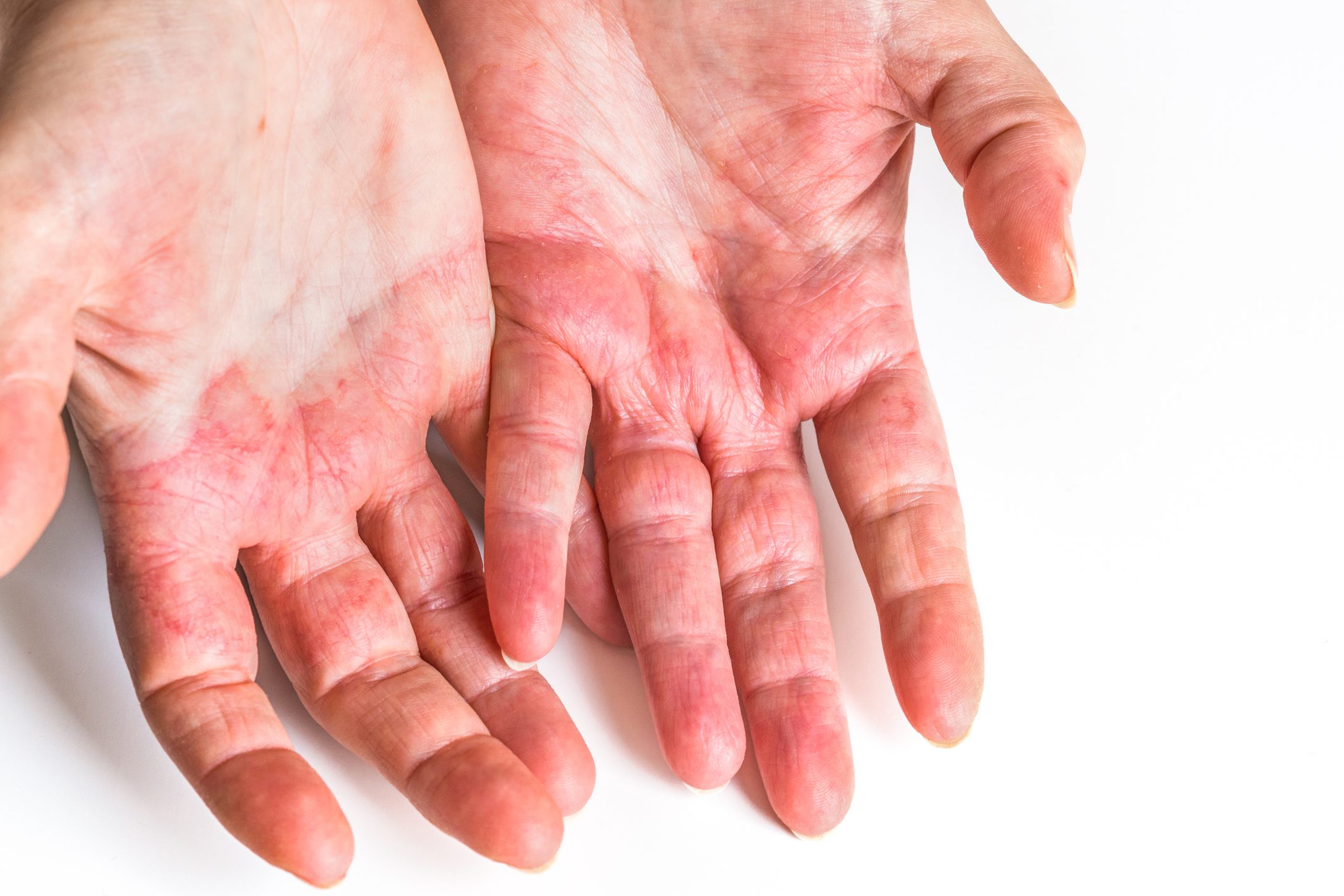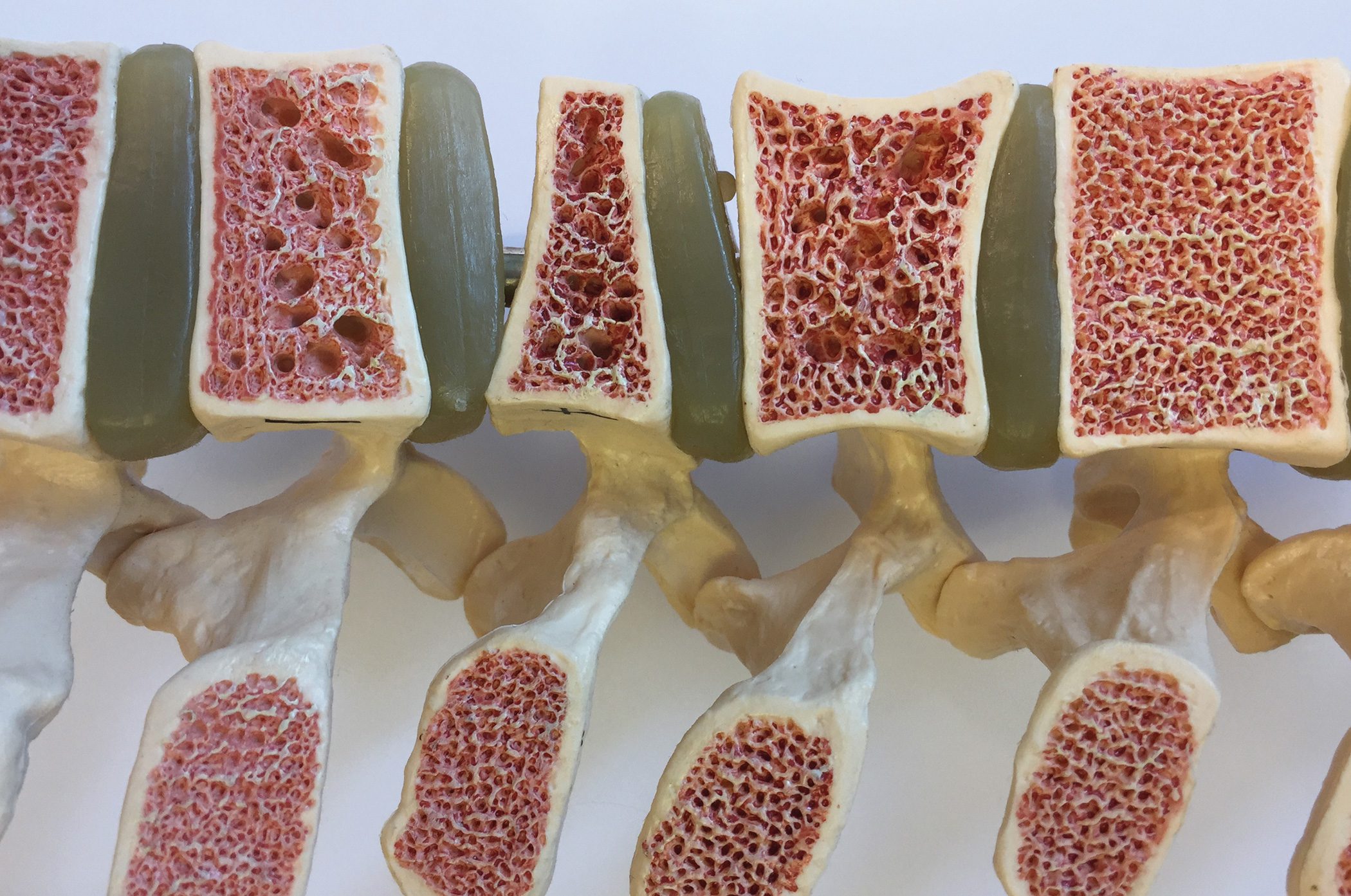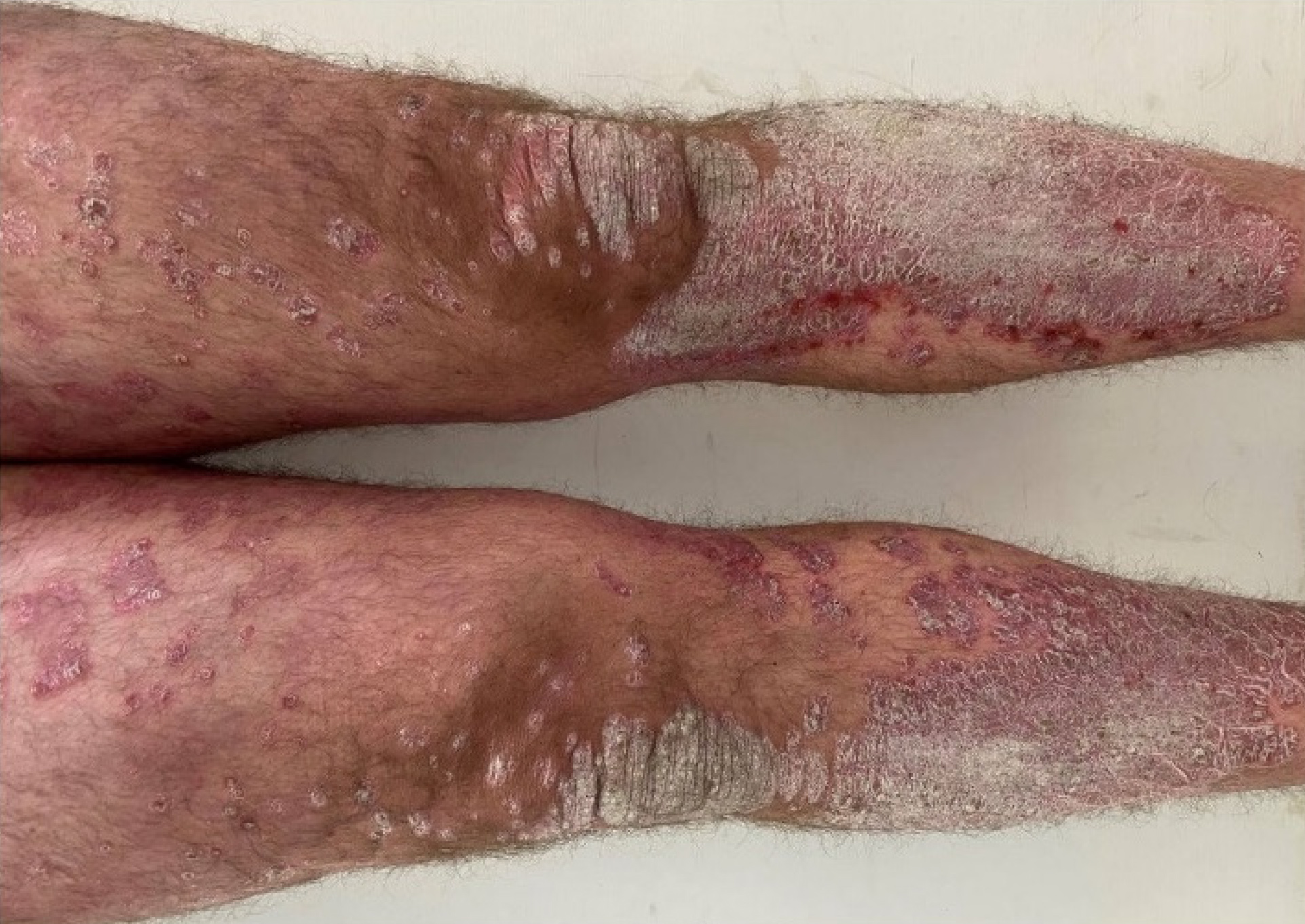Monoclonal antibodies are systems therapeutics that block specific cytokines or receptors and can thus selectively influence individual activation cascades of the immune system. Both dupilumab and tralokinmab – the two biologics currently approved in the indication area of atopic dermatitis – are characterized by a very good benefit-risk profile. Some other drug candidates are in advanced phases of clinical testing.
Dupilumab is the pioneer among biologics in the indication area of atopic dermatitis and specifically targets the common IL-4Rα subunit of type 1 and type 2 IL-4 receptors. Thus, this monoclonal antibody blocks not only interleukin(IL)-4 but also IL-13 [1]. A further milestone was reached with the marketing authorization of tralokinumab in Switzerland last year. Tralokinumab is a recombinant human monoclonal antibody that specifically neutralizes IL-13. Both agents are administered subcutaneously, and specific therapy monitoring is not required.

Dupilumab and tralokinumab: excellent benefit-risk profile
In Switzerland, dupilumab (Dupixent®) has been approved for the treatment of moderate to severe atopic dermatitis in adults since 2019 [2]. In November 2020, Swissmedic approval was granted for adolescents aged 12 to 17 years, and since June 2022, dupilumab can be used for children aged 6 years and older [2]. The main pivotal trials for dupilumab in adults were SOLO 1 and 2 (monotherapy with concomitant basic care), and CHRONOS (combination therapy with concomitant TCS) and CAFÉ (combination therapy with concomitant TCS in ciclosporin-experienced patients) [3–5]. The approval of dupilumab for adolescents is based on clinical data from the LIBERTY AD program. In all studies, a significantly superior EASI-75 response was demonstrated at week 16 in the placebo comparison.
Tralokinumab (Adtralza®) received marketing authorization in June 2022 for adult patients with moderate to severe atopic dermatitis. Unlike dupilumab, tralokinumab does not bind to the receptor but to the soluble part of IL-13. By binding to this cytokine, it prevents interaction with the IL-13Rα1 receptor [6,7]. In all three pivotal phase III trials in adult patients with moderate to severe atopic dermatitis, the primary endpoints were met [8]. While in ECZTRA 1 and 2 tralokinumab was studied as monotherapy, in ECZTRA 3 the biologic also proved to be an effective therapeutic option in combination with topical steroids (TCS) [9–11].

Apart from local reactions at the injection site and inflammatory changes in the eye, dupilumab therapy carries hardly any side effect risks. In the 52-week CHRONOS study, dupilumab-induced conjunctivitis was successfully treated with topical medications. For mild manifestations, hyaluronic acid eye drops were sufficient; for more severe manifestations, 0.1% fluorometholone eye drops or a 0.03% tacrolimus eye ointment were used [13]. Tralokinumab also has a favorable safety profile. In clinical trials, conjunctivitis occurred slightly less frequently than with dupilumab. The most common side effects of tralokinumab are upper respiratory tract infection/cold and injection site reactions [14].

It remains exciting: further biologics show therapeutic potential
Lebrikizumab specifically binds to freely circulating IL-13. Unlike tralokinumab, this monoclonal antibody prevents the binding of IL-13R-α1 and IL-4R-α-heterodimer receptor signaling complex, but not the binding of IL-13 to the “decoy receptor IL-13R-α2”, which can take up excess IL-13 [18,19]. In a phase IIb dose-finding study, lebrikizumab rapidly improved symptomatology in a dose-dependent manner (e.g., EASI-50, EASI-75, pruritus scores) in a placebo comparison [20]. The side effect profile was favorable, and tolerability was generally good. Phase III trials are evaluating efficacy and safety of lebrikizumab as monotherapy (ADvocate 1 and 2) and in combination with TCS (ADhere) [21].
Nemolizumab is another advanced-stage biologic in clinical research. This humanized monoclonal antibody blocks the α-subunit of the IL-31 receptor. IL-31 is also overexpressed in AD and has been implicated in the development of pruritus, inflammation, and skin barrier damage. In previous studies, nemolizumab was particularly convincing in its strong itch relief [22].
Tezepelumab, an anti-TSLP antibody, is another therapeutic approach being explored. TSLP (thymic stromal lymphoprotein) is an epithelial cell-derived cytokine produced in response to proinflammatory stimuli and is increased in lesional skin in atopic dermatitis [23]. TSLP is particularly associated with pruritus in AD [24,25]. Erythema at the injection site was the most common treatment-related adverse event.
Promising results are also available for an anti Ox-40 antibody. Ox-40 is a costimulatory receptor on activated T cells [23]. The antibody inhibits Ox-40 expressing cells (CD4+, CD8+ T cells, TH1, TH2, TH17 cells and reg T cells). It has been shown that AD patients have a higher number of dendritic cells with Ox40 ligand expression compared to healthy patients and Ox40 was more detectable in lesional eczema lesions [26]. In a phase IIa study, administration of the anti Ox-40 antibody at 4-week intervals resulted in significant clinical improvements [12].
Literature:
- Jappe U, et al: Allergology, vol. 44, no. 1/202: 54-80, https://dgaki.de/wp-content/uploads/2021/02/Allergologie_2021_44_1_54-80.pdf,(last accessed Jan. 11, 2023).
- Technical information, www.swissmedicinfo.ch,(last accessed 06.01.2023).
- Simpson EL, et al: N Engl J Med 2016; 375: 2335-2348.
- Blauvelt A, et al: The Lancet 2017;389(10086), 2287-2303.
- de Bruin-Weller M, et al: Br J Dermatol 2018; 178(5): 1083-1101.
- Schmid-Grendelmeier P: Dermatology Practice 2021; 31(4): 10-14.
- Wollenberg A, et al: J Dtsch Dermatol Ges 2021; 19(10): 1435-1442.
- Petronelli M: Dermatology Times, Dec 16, 2019,
www.dermatologytimes.com,(last accessed 06.01.2023) - Simpson E et al: presented at AAD VMX, June 12-14 and on-demand, 2020, USA.
- Wollenberg A, et al: Br J Dermatol. 2021; 184(3): 437-449.
- Silverberg JI, et al: Br J Dermatol 2021; 184: 450-463.
- Guttman-Yassky E, et al: J Allergy Clin Immunol 2019; 144(2): 482-493.e487.
- Wollenberg A, et al: J Allergy Clin Immunol Pract. 2018 Sep-Oct; 6(5): 1778-1780.e1.
- European Medicines Agency, Tralokinumab, Product Information, https://ec.europa.eu/health, last accessed Jan. 06 , 2023).
- “Atopic dermatitis, what’s new?”, Univ.-Prof. Dr. Paul-Gunther Sator, DermAlpin Salzburg, 30.10.2021.
- Akdis CA, et al: Allergy 2020; 75(7): 1582-1605.
- Nguyen JK, et al: Arch Dermatol Res 2020; 312(2): 81-92.
- Guttman-Yassky E, et al: JAMA Dermatol 2020; 156(4): 411-420.
- Moyle M, et al: Exp Dermatol 2019; 28(7): 756-768.
- Loh TY, et al: J Asthma Allergy 2020; 13: 109-114.
- Bader K: Dermatology Times, Nov 9, 2022,
www.dermatologytimes.com/view/eli-lilly-submits-bla-for-lebrikizumab-ad-treatment,(last accessed 06.01.2023) - Ruzicka T, et al: N Engl J Med 2017; 376: 826-835.
- Quint T, Bangert C: hautnah 2021; 20: 37-44.
- Ziegler SF, et al: Adv Pharmacol 2013; 66: 129-155.
- Shikotra A, et al: J Allergy Clin Immunol 2012; 129: 104-111.e1-9.
- Suga H, Sato S: Immunol Med 2019; 42(2): 84-93.
DERMATOLOGIE PRAXIS 2023; 33(1): 26–27












